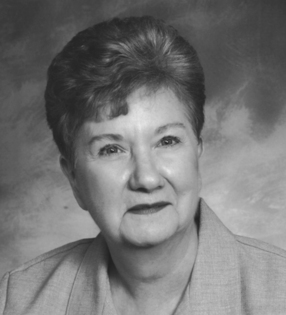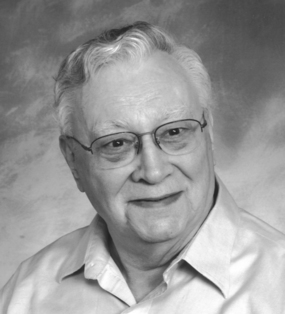The authors define Symphonology as “the study of agreements and the elements necessary to forming agreements,” (Husted & Husted, 2008, p. xv). In health care, it is the study of agreements between health care professionals and patients. An agreement is based on the nature of the relationship between the parties involved. In its ethical dimensions, it outlines the commitments and obligations of each. Although the theory developed from the observation of nurses and nursing practice, it later expanded to include all healthcare professionals (HCPs). The development of this theory has led to the construction of a practice-based decision-making model that assists in determining when and what actions are appropriate for HCPs and patients. The name of the theory is derived from the Greek word for agreement, symphonia. Ethics is “a system of standards to motivate, determine, and justify actions directed to the pursuit of vital and fundamental goals” (Husted & Husted, 2008, p. 8). Ethics examines what ought to be done, within the realm of what can be done, to preserve and enhance human life. The Husteds, therefore, described ethics as the science of living well. Bioethics is concerned with the ethics of interactions between a patient and an HCP, what ought to be done to preserve and enhance human life within the healthcare arena. Within the past century, the expanding knowledge base and growth of technology altered existing healthcare practice and created threatening and confusing circumstances not previously encountered. Increasing numbers and types of treatment options allowed patients to survive conditions they would not have in the past. However, the morbidity of the survivors brought new questions: Who should receive treatment? What is the appropriateness of treatments under particular circumstances? Who should decide what treatments are appropriate? In this way, bioethics became a central issue in what previously had been a prescriptive environment. It became essential to consider ethical concerns, as well as scientific solutions, to questions of health (Jecker, Jonsen, & Pearlman, 1997). Through personal experience and observation of nurses, the Husteds recognized the increasingly complex nature of bioethical dilemmas and the failure of the healthcare system to adequately address the problem. Because traditional models proved inadequate to guide ethical behavior for HCPs, the Husteds began to conceive and develop a method by which HCPs might determine appropriate ethical actions. The theory was based on logical thinking, emphasizing the provision of holistic, individualized care. They drew from the work of Aristotle, Benedict Spinoza, and Michael Polanyi. These philosophers adhere to rational thought and value persons as individuals. Aristotle was a student of Plato who advanced his teacher’s work by recognizing that there is more to understanding phenomena than simple rationality. He believed that one must develop insight and perception to recognize how principles can be applied to each situation (McKeon, 1941). The Dutch philosopher, Spinoza, examined the nature of humans and human knowledge. He recognized that, although the process and outcomes of reasoning may be comparable for each person, intuitive and discerning thought is unique to each. Spinoza believed that reason must be coupled with intuitive thought for true understanding (Lloyd, 1996). Spinoza was noted for taking well-worn philosophical concepts and transforming them into new and engaging ideas. This is true of the Husteds’ development of Symphonology, particularly in the evolution of the meaning of the bioethical standards. Polanyi proposed that understanding is derived from awareness of the entirety of a phenomenon, that the lived experience is greater than separate, observable parts. Tacit knowledge, that which is implied, is necessary to understand and interpret that which is explicit (Polanyi, 1964). These concepts, the uniqueness of the individual and the extension of reason and rationality with insight and discernment to create true understanding, are the foundations of the symphonological method. Study and dialogue between the two theorists, coupled with experience of the overall evolution of health care and observation of individual nursepatient relationships, provided the impetus to develop Symphonology theory. G. Husted’s dissertation focused on the effect of teaching ethical principles on a student’s ability to use these in practical ways through case studies. J. Husted was very instrumental in the selection of the dissertation topic and was used as a consultant during the process. Development of G. Husted’s doctoral work led to numerous publications and presentations before the first edition of the book Ethical Decision Making in Nursing was published in 1991. This first edition presented their work as a conceptual model only. As they continued to develop their ideas, incorporating feedback from graduate students, the Symphonological theory emerged. Before publication of the second edition, the Husteds (1995a) continued to clarify the theoretical concepts and developed the model for practice. Beginning in 1990, Duquesne University offered a course devoted to this bioethical theory. The authors continued to seek critique and examples about their work from students, practitioners, and other experts. The third edition of the book, Ethical Decision Making in Nursing and Healthcare: The Symphonological Approach (Husted & Husted, 2001), offered a clarified description of the theory with advanced concepts separated from the basic concepts. In addition, the model was redrawn to better represent the nonlinear nature of the theory in practice. The 4th edition offers further clarification of concepts and the integration of concepts in the theory as a whole. In addition, the text is rearranged to present the concepts from simple to more complex. Symphonology holds that a nurse or any other HCP acts as the agent of the patient. Using her education and experience, a nurse does for her patient what he would do for himself if he were able. Nursing cannot occur without both nurse and patient. “A nurse takes no actions that are not interactions” (Husted & Husted, 2001, p. 37). The nurse’s ethical responsibility is to encourage and strengthen those qualities in the patient that serve life, health, and well-being through their interaction (Fedorka & Husted, 2001). The Husteds define a person as an individual with a unique character structure possessing the right to pursue vital goals as he chooses (Husted & Husted, 2001). Vital goals are concerned with survival and the enhancement of life. A person takes on the role of patient when he has lost or experienced a decrease in agency resulting in his inability to take the actions required for survival or happiness. The inability to take action may result from physical or mental problems, or from a lack of knowledge or experience (Husted & Husted, 1998). The authors do not address or define health directly. The entire theory is driven by the concept of health in the broadest, most holistic sense. Health is a concept applicable to every potential of a person’s life. Health involves not only thriving of the physical body, but also happiness. Happiness is realized as individuals pursue and progress toward the goals of their chosen life plan (Husted & Husted, 2001). Health is evident when individuals experience, express, and engage in the fundamental bioethical standards. The environment established by Symphonology is formed by agreement. “Agreement is a shared state of awareness on the basis of which interaction occurs” (Husted & Husted, 2001, p. 61). Agreement creates the realm in which nursing and all other human interactions occur. Every agreement is aimed toward a final value to be attained through interactions made possible by understanding. The HCP-patient agreement is formed by a meeting of the professional’s and the patient’s needs. Their agreement is one in which the needs and desires of the patient are central. The professional’s commitment is defined in terms of the patient’s needs. Without this agreement, there would be no context for interaction between the two. The relationship would be unintelligible to both (Husted & Husted, 1999). The context is the interweaving of the relevant facts of a situation—the facts that are necessary to act upon to bring about a desired result (Husted & Husted, 2001). There are three interrelated elements of context: the context of the situation, the context of knowledge, and the context of awareness. The context of the situation includes all facts relevant to the situation that provide understanding of the situation and promote the ability to act effectively within it. The context of knowledge is an agent’s preexisting knowledge of the relevant facts of the situation. The context of awareness represents an integration of the agent’s awareness of the facts of the situation and her preexisting knowledge about how to most effectively deal with these facts (Husted & Husted, 2008). Symphonology is classified as a grand theory because of its broad scope. Grand theories explicate a worldview related to a specific discipline (Walker & Avant, 1995). Grand theories are developed through astute, perceptive, discerning consideration of existing ideas in regard to a general discipline (Fawcett, 1995). The authors developed Symphonology theory not from natural progression of other work, but from the recognition of a need for theoretical guidelines related to the ethical delivery of health care. The understanding and use of this theory are based on a fundamental ethical element that describes the rational relationship between human beings: human rights. The Husteds describe rights as the fundamental ethical element. Traditionally, rights are viewed as a list of options to which one is entitled, such as a list of items or actions to which one has a just claim. Symphonology holds rights as a singular concept. It is the implicit, species-wide agreement that one will not force another to act, or take by force the products of another’s actions. Rights are viewed as the critical agreement among rational people, the agreement of nonaggression (Husted & Husted, 1997a). This agreement emerged as humans became rational and developed a civilized social structure. A nonaggression agreement is preconditional to all human interaction. It serves as a foundation on which all other agreements rest. The formal definition is as follows: “the product of an implicit agreement among rational beings, held by virtue of their rationality, not to obtain actions or the products of actions from others except through voluntary consent, objectively gained” (Husted & Husted, 2001, p. 4). The operation of this is evident in human interaction. The authors have redefined the ethical standards, not as concrete rules, but as human qualities or character structures that can and must be recognized and respected in the individual (Husted & Husted, 1995b). For example, in Symphonological terms, beneficence includes the idea of acting in the patient’s best interest, but it begins with the patient’s evaluation of what is beneficial. In this way, ethical standards are presuppositions in the HCP-patient agreement and ethical guides to decision making. The participants work together with the implicit understanding that each is possessed of human characteristics. The description and names of the bioethical standards have changed over time based on feedback from practitioners. Symphonological theory holds that patients have a right to receive the benefits specified in the bioethical standards. Box 26-1 provides definitions and examples of bioethical standards.
Symphonological Bioethical Theory
THEORETICAL SOURCES
USE OF EMPIRICAL EVIDENCE
MAJOR ASSUMPTIONS
Nursing
Person or Patient
Health
Environment-Agreement
THEORETICAL ASSERTIONS
Rights
Ethical Standards
Symphonological Bioethical Theory
Get Clinical Tree app for offline access





